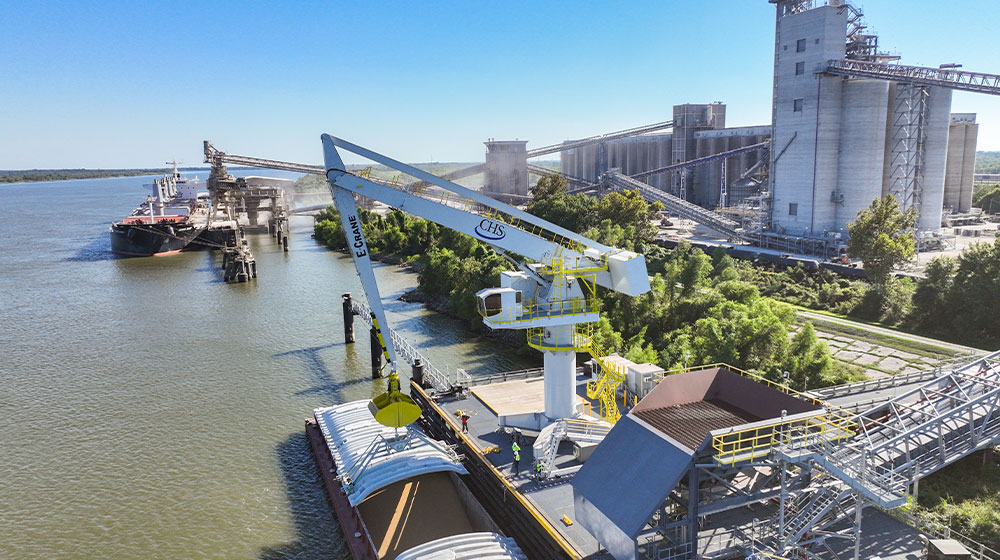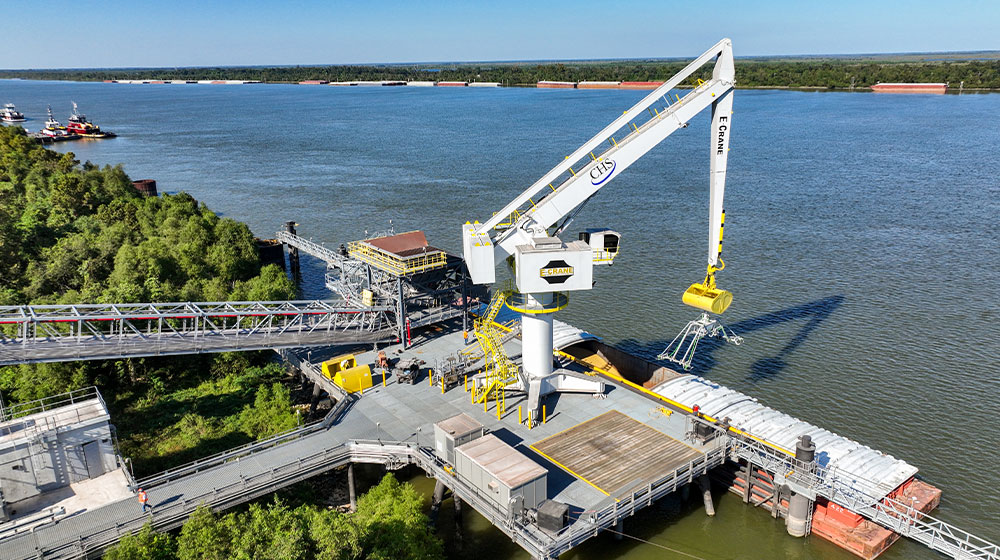CHS has completed major renovation and expansion of its Myrtle Grove, La., export terminal, located 25 miles south of New Orleans. The expanded facility allows the terminal to safely move 30% more bushels of grain in less time to meet global demand. In addition to increased speed and capacity, the expanded facility better positions CHS to load multiple commodities in oceangoing vessels to attract and serve new customers.

“The strategic location of the Myrtle Grove facility will help CHS export more grain with increased precision, supporting volume growth to benefit the entire supply chain — from farmers’ fields to global markets,” says John Griffith, executive vice president of the agriculture business at CHS. “Faster, more efficient loading and unloading helps CHS connect owners with more customers around the world.”
With a 30% increase in corn, soybean, and wheat handling capacity, the improvements to the terminal position CHS to meet global demand for high-quality commodities. The upgrades also expand the handling capacity for soybean meal and distillers dried grains with solubles (DDGS). Terminal employees can now load grocery boats more quickly with a mix of grains and grain byproducts to satisfy the needs of customers located around the world.
Key upgrades include:
- Six additional concrete silos, adding capability and efficiency for more products.
- A new bulk weighing and grading system with flexibility for three grain flows.
- A new dock and barge unloading system for increased efficiency.
- The first permanent E-Crane dedicated exclusively to grain exports in the U.S. This electric-powered crane will reduce energy costs and improve efficiencies.
The Myrtle Grove facility is part of a global network of terminals owned by CHS and plays a crucial role in the ability to move more than 2 billion bushels annually through river, rail and export terminals.

The modernization project completed at the CHS terminal in Mrytle Grove, La., includes installation of the first permanent E-Crane dedicated exclusively to grain exports in the U.S. Compared to traditional cranes with combustion engines, the new electric -powered crane will reduce energy costs and improve efficiencies.




